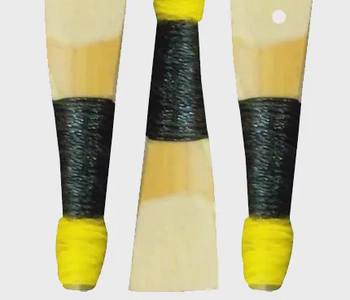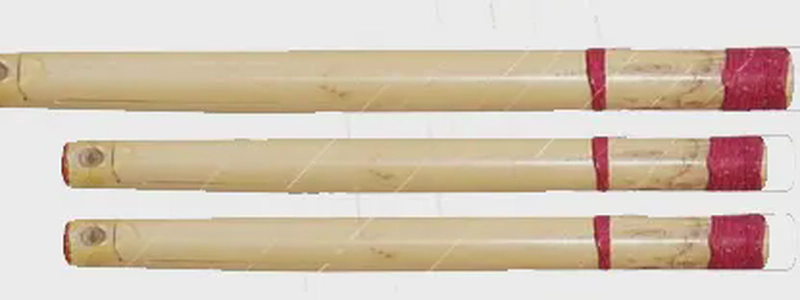- Articles
- July 13, 2023

Bagpipe reeds are vital components in producing the sound of a bagpipe, and they come in various forms depending on the part of the bagpipe they are used in.

There are mainly two types of reeds used in bagpipes: the chanter reed and the drone reed.

Chanter Reed
- Type: The chanter reed is a double reed similar to that of an oboe, but specific to the bagpipe’s requirements. It is placed in the upper part of the chanter.
- Material: Traditionally made from cane, modern chanter reeds can also be made from synthetic materials. Cane reeds are prized for their tonal quality but require more maintenance and can be sensitive to changes in humidity and temperature.
- Function: The vibration of the double reed produces the sound as air is forced over it, with the pitch and tone being modulated by covering and uncovering the finger holes on the chanter.
- Adjustment: Players can adjust the reed’s strength and pitch slightly by manipulating the bridle (a small band that can be moved up or down the reed) or by trimming the reed edges, though such adjustments require skill and precision.

Drone Reed
- Type: Drone reeds can be single or double reeds, but modern bagpipes often use synthetic single reeds for stability and ease of maintenance.
- Material: While traditional drone reeds were also made from cane, synthetic materials are now common, offering greater consistency and resistance to environmental changes.
- Function: Drone reeds are placed in the drones (the three pipes extending from the bag) and produce a continuous, harmonizing note that accompanies the melody played on the chanter.
- Tuning: The pitch of the drone can be adjusted by changing the length of the drone using tuning slides, and the reed itself can be adjusted to control the steadiness and quality of the sound.
Maintenance and Care
- Hydration: Cane reeds need to be properly moistened before playing to ensure they vibrate correctly. However, excessive moisture can lead to degradation, so balance is key.
- Cleaning: Reeds should be cleaned regularly to remove any saliva or debris that could affect performance.
- Storage: Proper storage is crucial to extend the life of a reed. Many pipers use special containers that maintain a stable humidity level to keep cane reeds in good condition.
Selection
Choosing the right reed is crucial for achieving the desired sound quality and ease of playing. Factors to consider include:
- Strength: Reeds come in different strengths (easy, medium, hard), affecting how much air and pressure is needed to play.
- Compatibility: Not all reeds work well with every chanter or set of drones, so players often experiment with different brands and types to find the best match for their instrument.
In summary, bagpipe reeds are essential for the instrument’s function, with each type and material offering unique characteristics. Proper selection, adjustment, and care of the reeds are crucial aspects of bagpipe playing, directly impacting the instrument’s sound and playability.p


